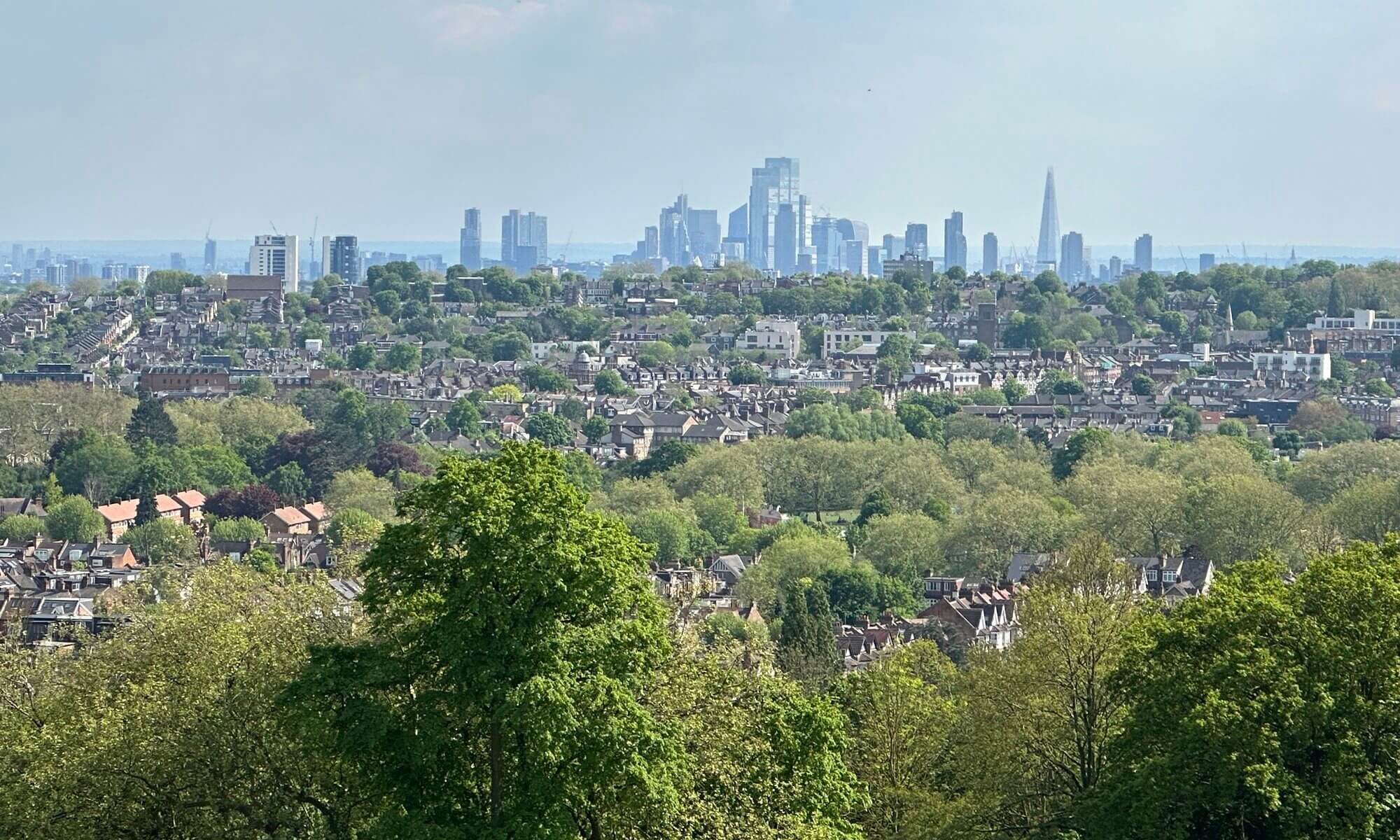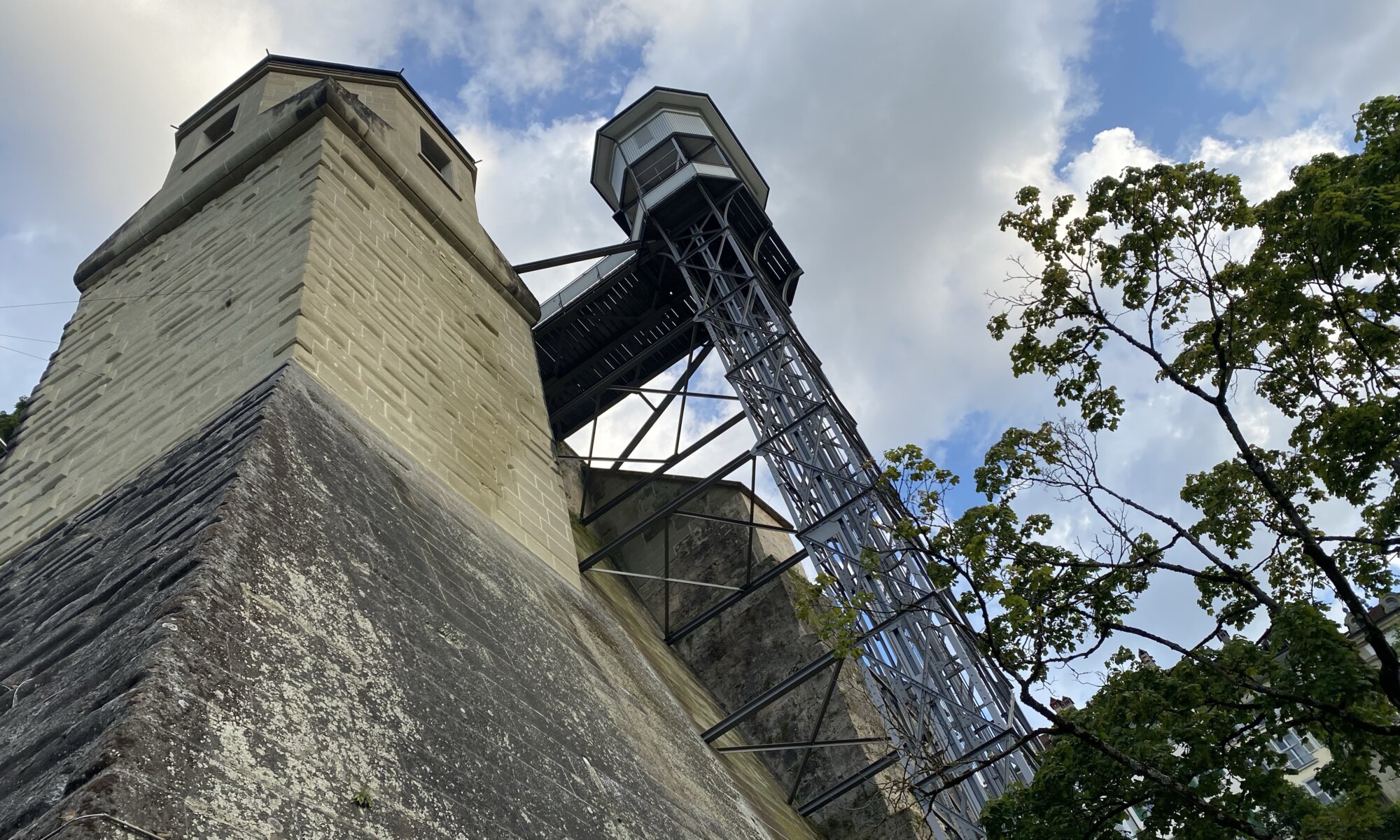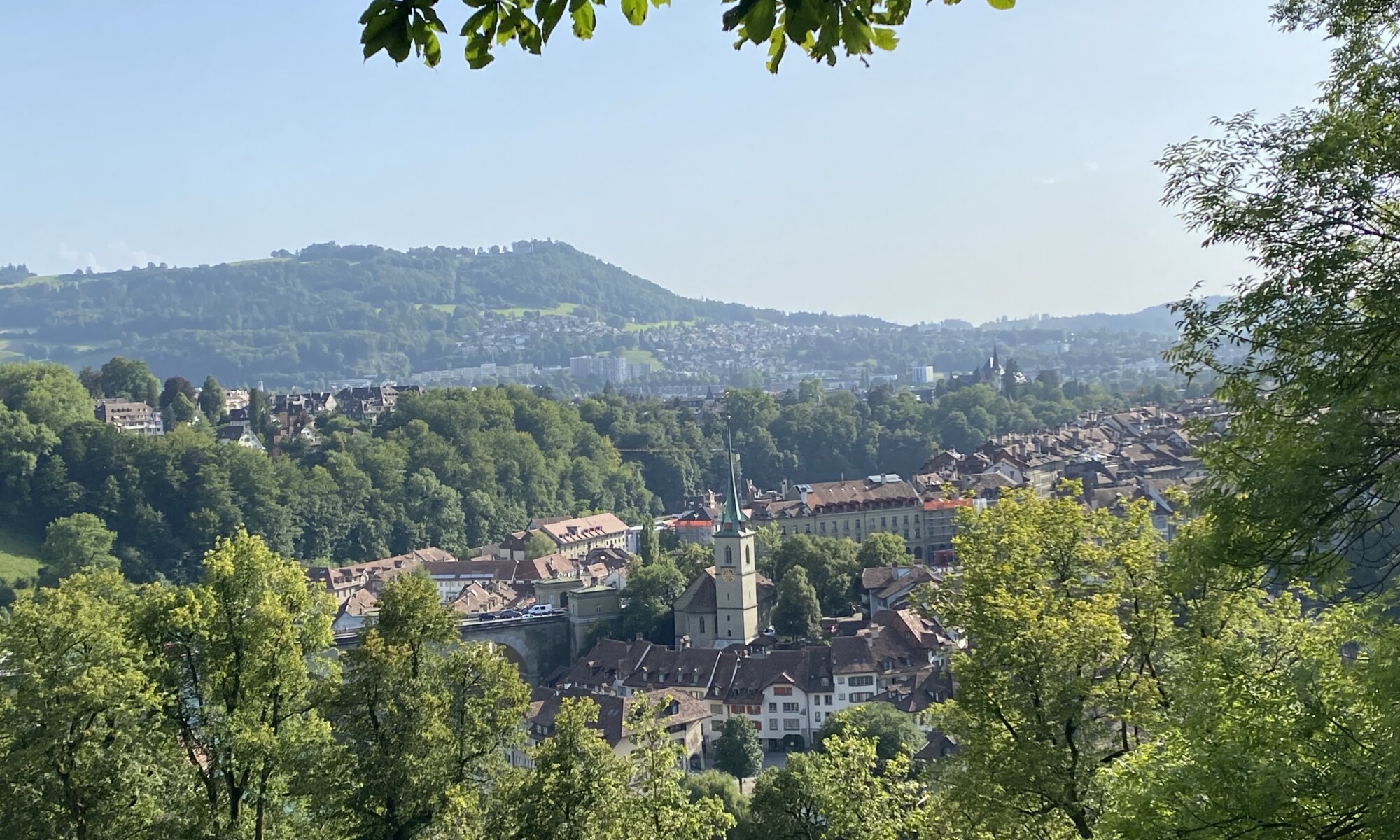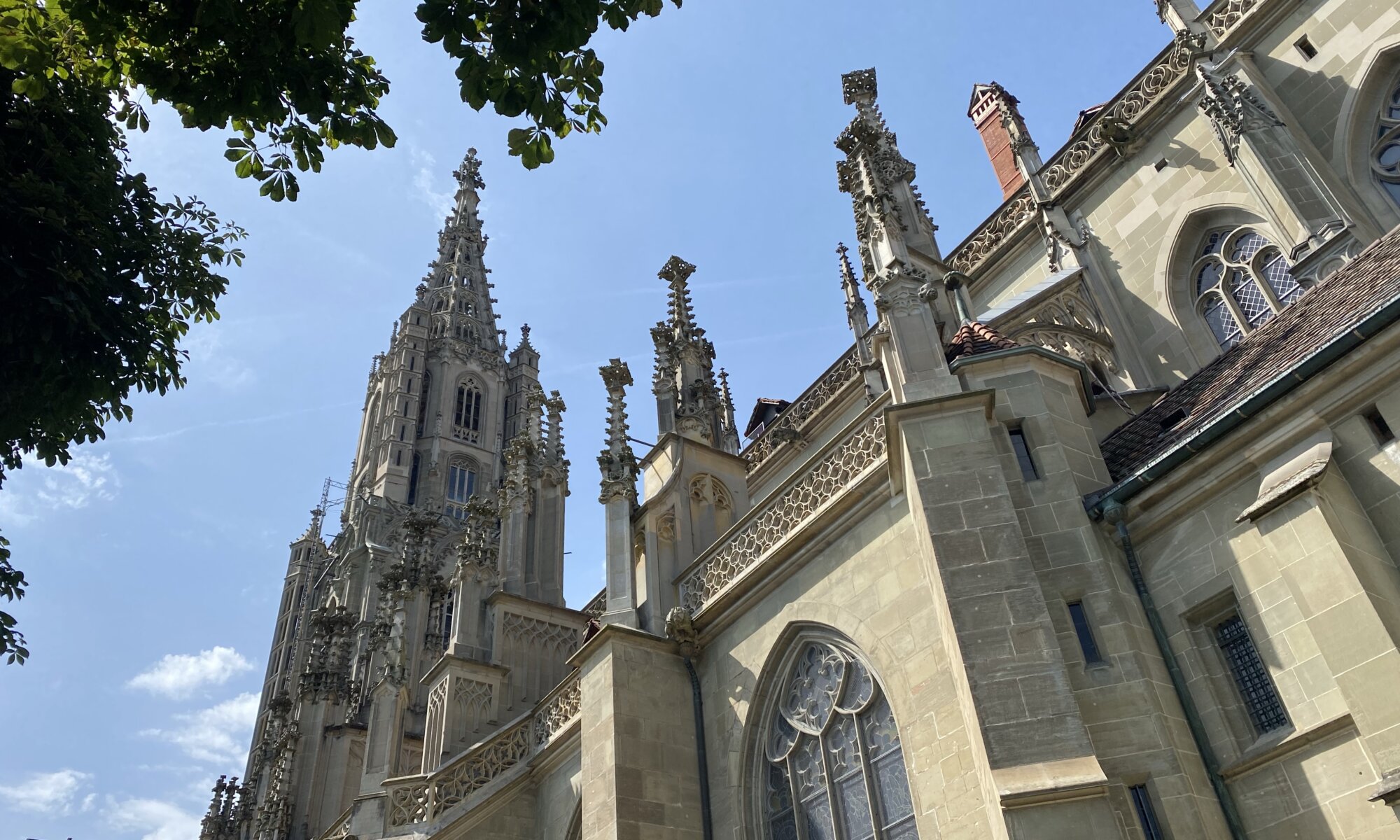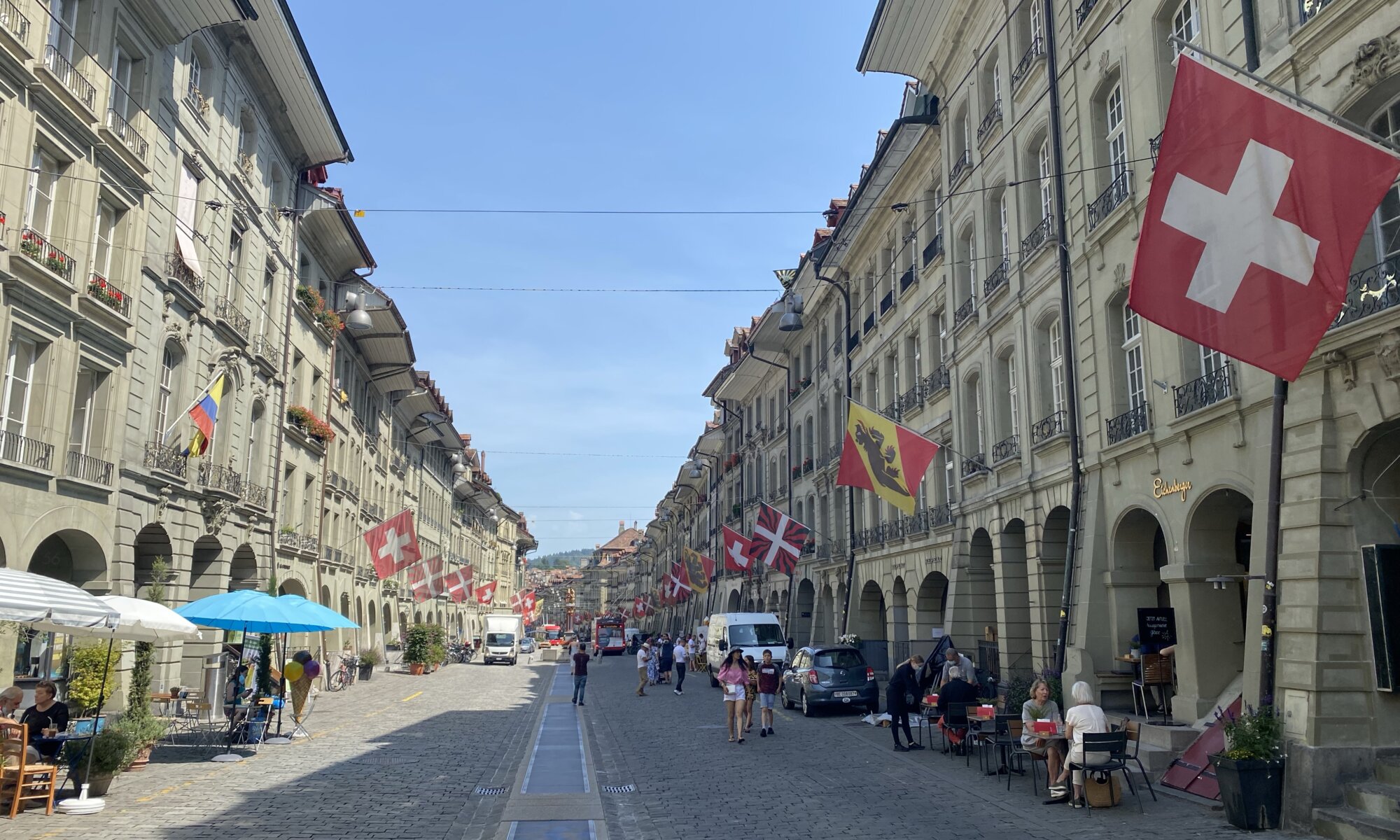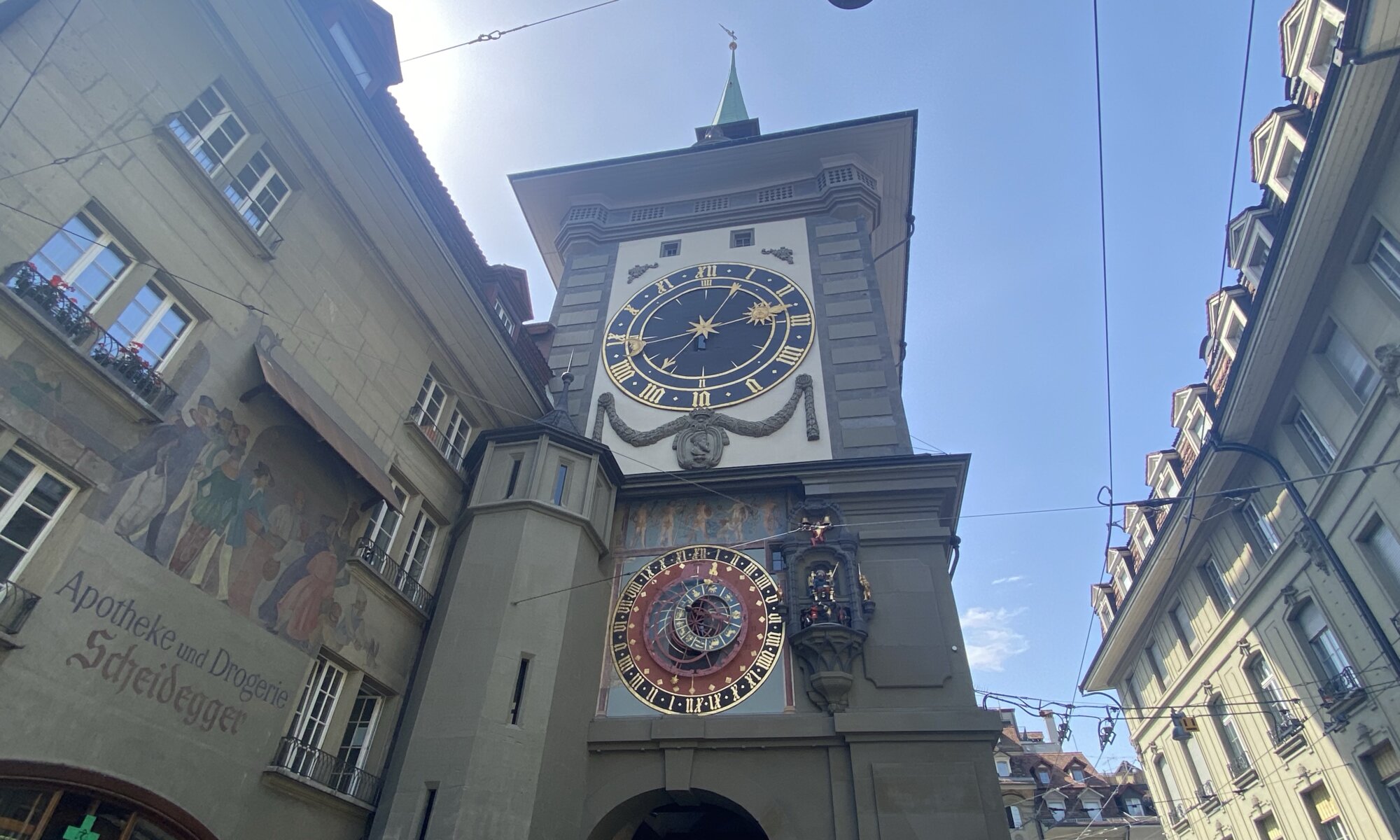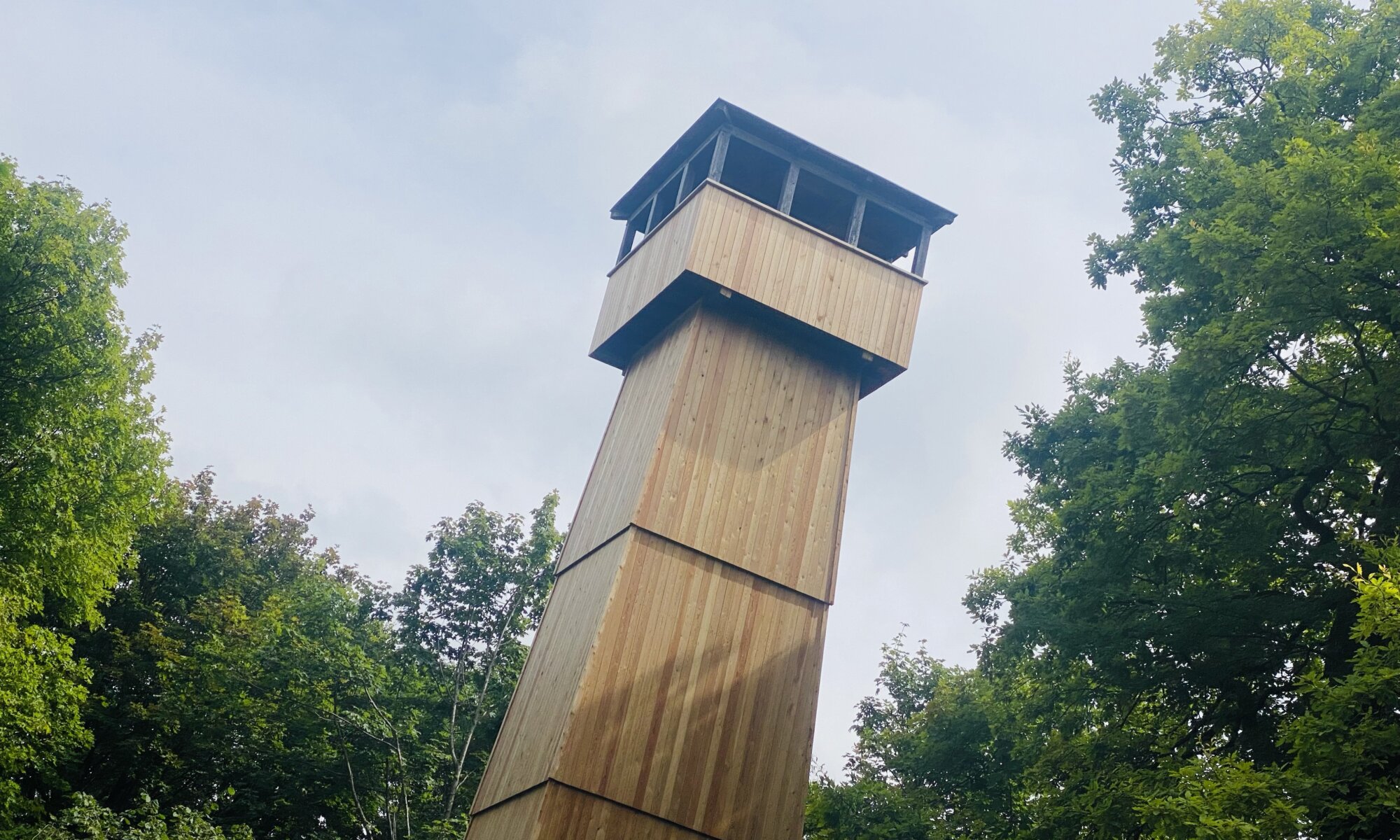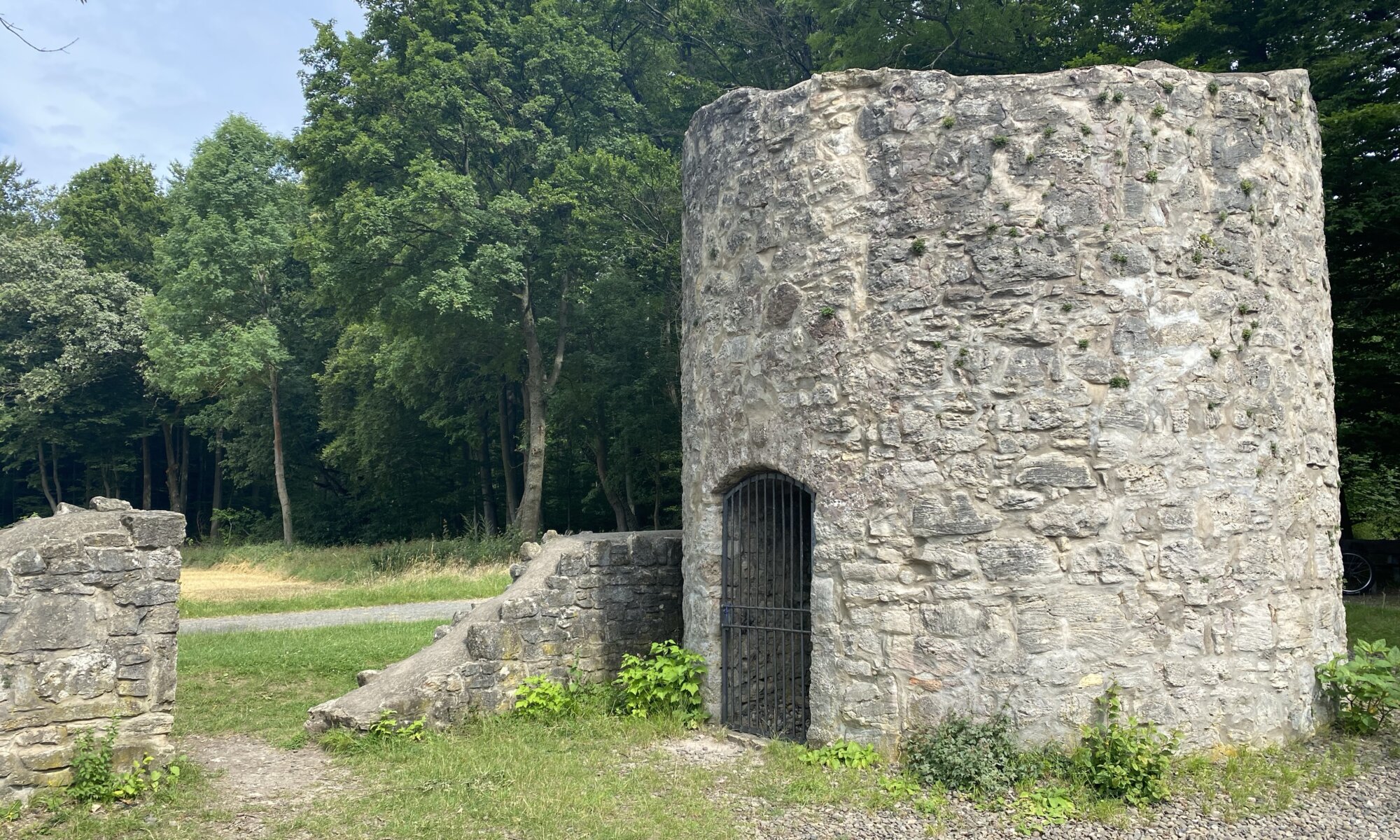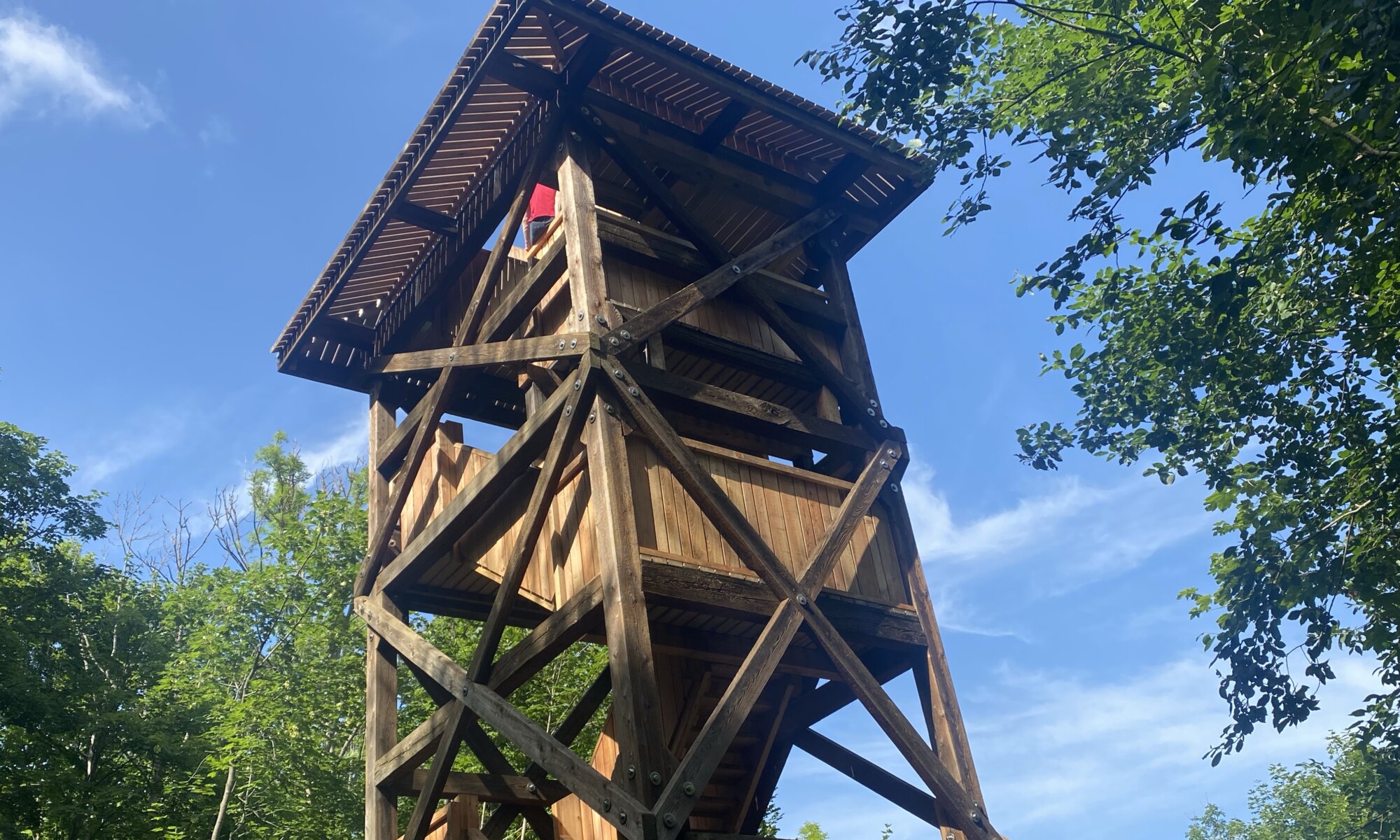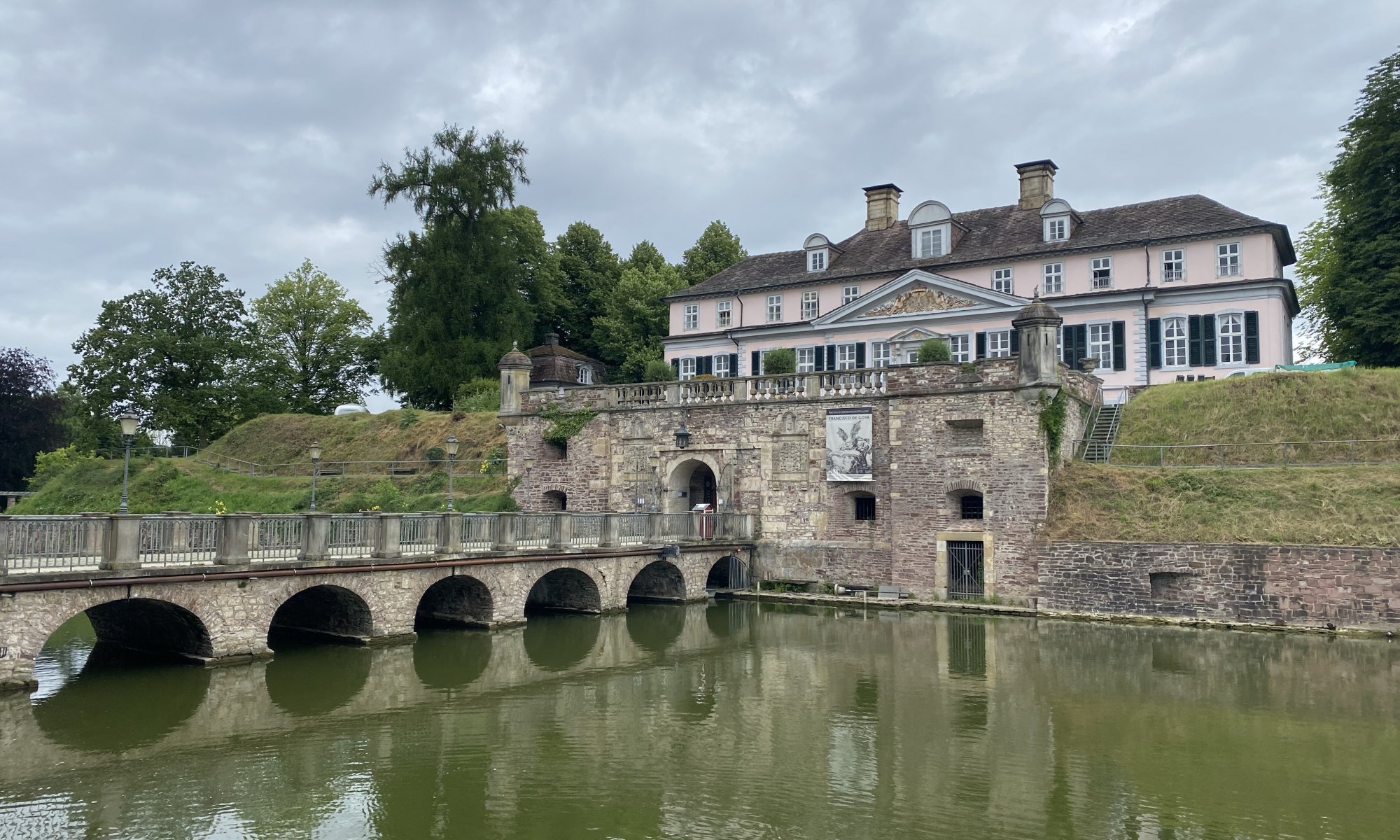The Mattelift is a simple elevator at Bern which you’ll find attached to the Münsterplattform close to the cathedral. It is part of public transport and connects the city center with the lower quarter Matte which was in old times a zone for the lower class and crafts like tannery. Locals call it the Senkeltram – a tramway going up and down on a lace.
Continue reading “Senkeltram”Rosengarten
High above Bern the Rosengarten is a beautiful place to relax. Some people might come for the four hundred types of roses planted there, others to sit in the sun or to play. The best of course is the amazing view on the old city center and the slope of the river Aare.
Continue reading “Rosengarten”Bärengraben
It’s well known that the heraldic animal of Bern is the bear. That’s hard to miss because it can be found everywhere on stuff relating to the city. Why is that? The legend says that the city was named by its founder Berthold V., the duke of Zähringen, after the first animal he has slain in the area. Still today a small number of bears are held in the city, and you can visit them east of the old city center at the river Aare.
Continue reading “Bärengraben”Münster
When visiting Bern there is no way around having a look at the Berner Münster, the beautiful Gothic-style cathedral in the heart of the city. It was built starting in 1421 on the grounds of a former smaller church in this location. Most impressive detail is the portal depicting the Last Judgment with 234 figures carved out of sandstone.
Continue reading “Münster”Kramgasse
Walking through the beautiful Kramgasse at Bern is liking walking through history. The street is 330 meters long and begins at the famous Zytglogge tower. It was created in 1191 and was the most important axis of the old city. Today it is a protected UNESCO world heritage site and mostly filled with shops, restaurants, and coffee bars.
Continue reading “Kramgasse”Zytglogge
The Zytglogge is a famous clock tower in the old town of Bern, Switzerland. When you decode the local German dialect its name consists of the two words ‘Zeit’ and ‘Glocke’, ‘time’ and ‘bell’. It was built between 1218 and 1220 and was once part of the protection system of the city. As the city could only grow to the west because of the geographic situation it is now at the heart of the city.
Continue reading “Zytglogge”Hünstollenturm
Amazing views await those, who are willing to hike a while through the Göttingen forest. The Hünstollen is a 423 meters high mountain in the northeast of the city, officially belonging to Bovenden. Because of high cliffs this place was easily made a fortification in earlier days. Since 1882 there was a protective hut and a restaurant at this place and later a wooden tower was created from which you can see the Harz mountains but also the Gaußturm on the Hoher Hagen mountain.
Continue reading “Hünstollenturm”Rieswarte
In the year 1380 duke Otto the Evil gave the right to create ditches around the city of Göttingen to protect its borders and the people within. In addition to this protective system called Landwehr in German it was allowed to erect free-standing towers (Bergfriede) on mountains and fortifications (Warten) next to roads to control who is entering or leaving the city.
Continue reading “Rieswarte”Harzblick
Is it possible to see the Harz mountains from Göttingen? Not always, but sometimes. The Brocken is 60 kilometers afar, but from the Harzblick tower you’ve got a fair chance. The 35 meters high tower is located near the Mackenröder Spitze in the forest of the city. It was first built in 1897 and had to be rebuilt more than once. In 2021 it was refurbished again and from its top you can see the Seeburger See and the Gleichen – and on good days also the Harz mountains.
Continue reading “Harzblick”Schloß Pyrmont
The most impressive building at Bad Pyrmont is the Baroque-style castle from the 18th century located in a well-protected fortification dating back to the 16th century CE. It was used as a summer residence, but you can also find traces of war as it was besieged and conquered multiple times, even by Swedish troops. Still today the fortification is impressive with a wide moat, high walls, and a long bridge over which you can reach the castle. The tunnel leading you inside has a specialty; it is bended so that nobody can shoot inside. Throughout the castle grounds you can find many chambers and passages to discover.
Continue reading “Schloß Pyrmont”